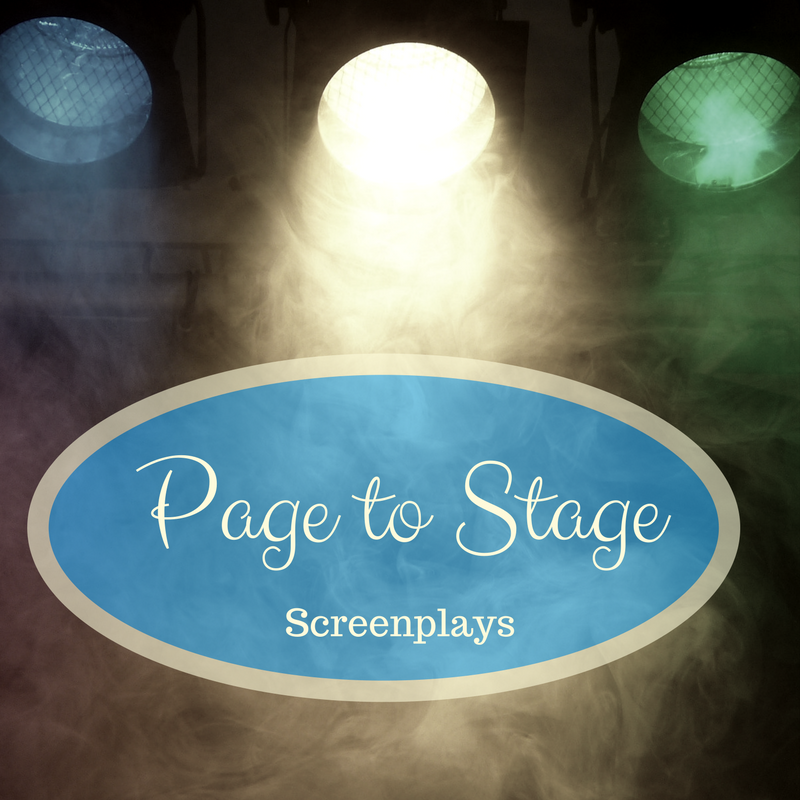If you’re anything like me, you’ve been creative most of your life. For myself, I grew up as an Army brat moving to new bases every few years. I never really made any good friends until after my father retired from military and my family settled down in Georgia.
All of that moving around only fueled my creative nature by forcing me to be creative in my entertainment. Like most boys, I enjoyed creating battle scenes with my toys outside: G.I. Joes, Transformers, Voltron and of course Star Wars.
It wasn’t until middle school that my passion for writing developed and was further encouraged by my high school drama teacher. In the 21st-century there are many ways for us creatives to tell stories.
- Dancing
- Art
- Writing books.
- Writing songs
- writing articles
- writing blogs
- writing movies
Each medium has a unique way to impact an audience for good. In writing (particularly in screenwriting) this is called the takeaway. Movies are a powerful way to use visuals to share narratives with meaning to our audience.
If you’ve been following me on this website for any time, you’re aware that screenwriting is my favorite outlet for creativity—because movies are visual stories. The irony is I am legally blind.
However, when I write I create the action visually in my mind first. This part of writing excites me because the action fuels my desire to create stories. Movies are powerful because they engage most of our senses simultaneously. Medical studies have proven men are easily stimulated by visuals. Perhaps this is why action movies are our first pick for movies.
Action?
As I predicted, my best friend and I finally got to go see Marvel’s Endgame on another guy’s night out. Not only was the plot satisfying, but the action on screen was also mesmerizing. Action movies rank second at the box office success after its big brother adventure movies, raking in nearly $47 billion since 1995.[i]
The genre of action movies typically pits the protagonist/protagonists into a series of challenges that physically test their strength, mental acumen or faith. They usually involve violence, fight scenes, or acts of heroism.
Robert McKee explains, “Action genres turn on public values such as freedom/slavery or justice/injustice.”[ii] Action movies challenge the protagonist to flip the story’s charge or value from a negative to positive and sometimes vice versa.
If any of this confuses you, consider Marvel studio’s latest blockbuster Endgame: The plot of the movie started out in the negative as the heroes try to figure out how to stop the big bad Thanos. Worse yet, in the beginning of the movie the franchise patriarch protagonist, Tony Stark, is dying as he drifts through space on a doomed starship—this all adds up as a negative/negative story charge and it’s up to our protagonists to flip it to the positive. (Don’t worry; this is a spoiler-free post if you haven’t seen Endgame yet.)
This power shift is the
typical M.O. of action movies. The MCU (Marvel Cinematic Universe) has mastered
this genre for over a decade and I’m confident it will continue into phase 4 of
the cinematic universe.
Marvel not only raises the stakes by using
better special-effects for their action movies, but they also hire better writers to develop characters and plots that are
more relatable for audiences, compared to classic predecessors in the Action sub-genre of superhero movies. For
example:
- Flash Gordon
- The original Superman trilogy
- Batman
- Supergirl
- The Toxic Avenger
- Robocop
- James Bond Dr. No
In the weeks since seeing Endgame I have had countless conversations with friends about their reactions to the film, a few even admitted to crying over the ending. The audience’s reaction is more a result of great storytelling than special effects.
Stories?
At the heart of every great movie is a great story, regardless of the creative genre used to express it. The latter two simply pack more bang for the buck.
- Romance
- Comedy
- Adventure
- Action/Superhero
No matter the genre, all films begin with, lights camera and action.
[i] https://www.the-numbers.com/market/genres
[ii] McKee R. (1997). Story: Substance, Structure, Style, And The Principle of Screenwriting (Kindle edition) pg 36.

Martin Johnson survived a severe car accident with a (T.B.I.) Traumatic brain injury which left him legally blind and partially paralyzed on the left side. He is an award-winning Christian screenwriter who has recently finished his first Christian nonfiction book. Martin has spent the last nine years volunteering as an ambassador and promoter for Promise Keepers ministries. While speaking to local men’s ministries he shares his testimony. He explains The Jesus Paradigm and how following Jesus changes what matters most in our lives. Martin lives in a Georgia and connects with readers at Spiritual Perspectives of Da Single Guy and on Twitter at mtjohnson51.


 We love helping your growing in your writing career.
We love helping your growing in your writing career.

No Comments